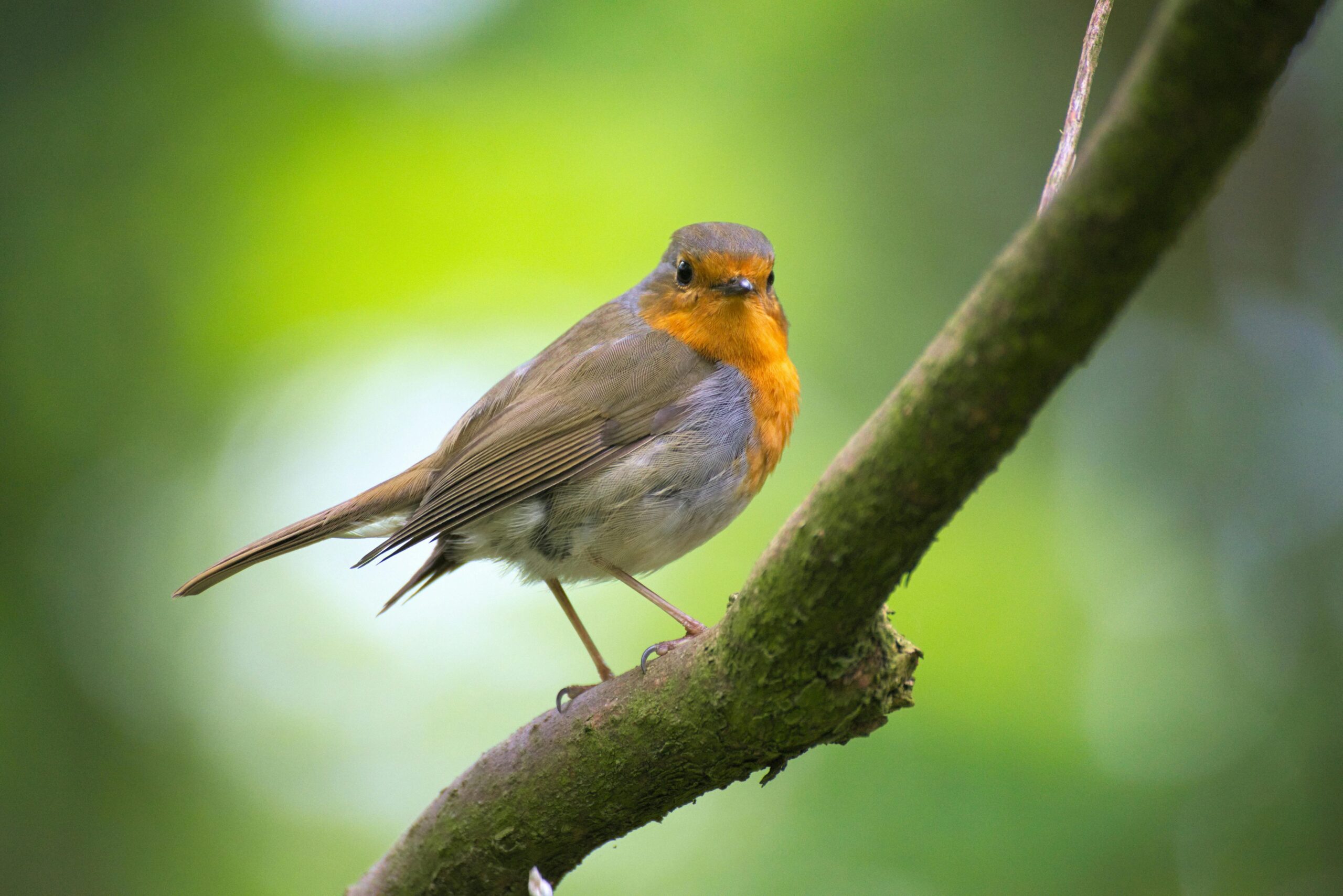Birdwatching Beyond Your Window: 160+ PNW Birding Resources
Many people first discover the joy of birdwatching right at home simply by noticing the birds outside their window. However, this is a hobby that quickly invites you outdoors. The Pacific Northwest is one of the richest birding regions in North America, home to diverse habitats from coastal estuaries and forests to the high desert and gorgeous expansive meadows. Washington and Oregon also offer a huge range of resources to help you connect with local birdlife. From local Audubon chapters and passionate social media groups to birdwatching hot spots, festivals and more, we’ve aimed to compile an extensive list of birding resources to help you on your next birdwatching adventure.
Informational Websites
Avian Knowledge Northwest: A science-based hub providing bird conservation data, interactive tools, and resources for the Pacific Northwest.
Be Bird Wise: Public education campaign promoting respectful and safe birdwatching practices in the Pacific Northwest.
Eastern Washington Birds: Bird photos and information highlighting species of Eastern Washington.
BirdWeb: Seattle Audubon’s online guide to the birds of Washington State.
eBird Oregon: Cornell Lab’s citizen science platform for tracking bird sightings in Oregon.
eBird Washington: Cornell Lab’s citizen science platform for tracking bird sightings in Washington.
Birding Eugene: A birding site dedicated to locations, sightings, and photos around Eugene, Oregon.
Tillamook Birder: Local resource sharing bird sightings, events, and updates from Tillamook County, Oregon.
Klamath Basin Bird News: A news and sightings hub for bird activity in the Klamath Basin.
Travel Oregon – Birding: Official Oregon tourism guide to birdwatching locations and experiences across the state.
Umpqua Birds: Douglas County, Oregon birding information.
WA Bird Guide: Comprehensive guide to Washington birding sites, hotspots, and seasonal tips.
WA Bird Year: Jennifer R. McKeirnan’s quest to photograph every bird in Washington over the course of a year.
BirdDash Oregon: A data tool for exploring bird checklists and sightings in Oregon.
BirdDash Washington: A data tool for exploring bird checklists and sightings in Washington.
Wing & Tail Image Collection: University of Puget Sound’s collection of bird wing and tail pictures.
Accessibility
Audubon Birdability: A crowdsourced birding map detailing accessible birding locations.
AllTrails – Washington ADA Trails: Wheelchair-accessible and ADA-compliant trails throughout Washington.
AllTrails – Oregon ADA Trails: Wheelchair-accessible and ADA-compliant trails throughout Oregon.
TrailLink – Oregon Wheelchair Accessible Trails: Directory of Oregon trails suitable for wheelchairs.
TrailLink – Washington Wheelchair Accessible Trails: Directory of Washington trails suitable for wheelchairs.
Washington Trails Association – ADA Accessible Summer Hikes: A guide to summer hikes in Washington that are fully ADA-accessible for people with mobility limitations.
Travel Oregon – Accessible Trails: An overview of Oregon trails designed for users with mobility or accessibility needs.
Travel Portland – Accessible Trails: A guide to Portland-area trails and outdoor activities that are wheelchair-accessible.
Oregon Science & Industry – Accessible Trails: A list of accessible outdoor trails in Oregon with a focus on inclusive exploration for all abilities.
The Disabled Hiker’s Guide to Western Washington and Oregon: A comprehensive guidebook offering accessible trail routes and practical advice for hikers with disabilities.
Seattle Met – Accessible Paved & Flat Trail Hikes Near Seattle: A guide to easy, paved, and flat trails around Seattle suitable for wheelchairs.
SheBirds – Urban & Accessible Birding: A birding specific guide to accessible trails around Seattle.
Social Media Groups
PNW
- Birding – Western USA & Canada
- Hummingbirds of Washington, Oregon & California
- Oregon-Washington Birding
- Pacific Northwest Bird Nerds
- Pacific Northwest Birding
- West Coast Birders
Oregon
- A collection of Whatsapp and other chat groups for various areas in Oregon
- Birding Oregon
- Birds and Wildlife of Lincoln-Tillamook Counties
- Birds in Klamath Falls Oregon
- Friends of Klamath Basin Birds
- Gold Beach OR birdwatchers
- Grant County Oregon Bird Club
- Mid Valley Nature (Google Group)
- Oregon Backyard Bird Feeding & Watching
- Oregon Birders Online (freelist)
- Oregon Birding Association Photos
- Oregon Wildlife and Nature Photography
- Prineville Bird Club
Washington
- Birds of Puget Sound
- Eastern Washington Birders
- Northeast Washington Birders Group
- Spokane Birders
- Tri-Cities Birders
- Washington Birders
- Washington Rare Bird Alert
- Washington birds
- Western Washington Birders
- WSU Birdwatchers
Audubon Societies and Other Birding Organizations
Oregon
- Bird Alliance Oregon
- Cape Arago Audubon Society
- Coast to Cascades Bird Alliance
- East Cascades Bird Alliance
- Feminist Bird Club PDX
- Friends of Klamath Basin Birds
- Kalmiopsis Audubon Society
- Klamath Basin Audubon Society
- Lincoln City Audubon
- Mid-Willamette Bird Alliance
- Oregon Birding Association
- Oregon Wildlife Coalition
- OSU Bird Nerds
- Pendleton Bird Club
- Rogue Valley Audubon Society
- Salem Audubon Society
- Seven Capes Bird Alliance
- Siskiyou Audubon Society
- Umpqua Valley Audubon Society
Washington
- Birds Connect Seattle
- Blue Mountain Audubon Society
- Central Basin Audubon Society
- Feminist Bird Club Seattle
- Feminist Bird Club South Sound
- Grays Harbor Audubon Society
- Kitsap Audubon Society
- Kittitas Audubon Society
- Lower Columbia Basin Audubon Society
- North Cascades Audubon Society
- North Central Washington Audubon
- Olympic Peninsula Audubon Society
- Pilchuck Audubon Society
- Rainier Audubon Society
- Rainshadow Bird Alliance
- Skagit Audubon Society
- South Sound Bird Alliance
- South Sound Birders
- Spokane Audubon Society
- Tahoma Bird Alliance
- Vancouver Audubon
- Vashon Bird Alliance
- Washington Ornithological Society
- Whidbey Audubon Society
- Willapa Hills Audubon Society
- Yakima Valley Audubon Society
Books and Field Guides
Pacific Northwest
- Birds of the Pacific Northwest: A Photographic Guide
- Kids Guide to Birds of Washington
- Look at That Bird: A Young Naturalist’s Guide to Pacific Northwest Birds
- Pacific Northwest Birding Companion
- Pacific Northwest Birds: Forest & Mountains – A Pocket Reference
- Pacific Northwest Birds: Lowlands & Coast – A Pocket Reference
- Sibley Field Guide to Birds of Western North America (Second Edition)
- Sibley’s Birds of the Pacific Northwest Coast
Oregon
- American Birding Association Field Guide to Birds of Oregon
- Birds of Oregon Field Guide
- Birds of Oregon: A General Reference
- Birds of the Inland Northwest and Northern Rockies
- Handbook of Oregon Birds
- National Geographic Field Guide to Birds
- Oregon Birds
- The Birder’s Guide to Oregon
- Watchable Birds of the Great Basin
Washington
- A Birder’s Guide to Washington
- American Birding Association Field Guide to Birds of Washington
- Birding in Seattle and King County
- Birding Washington
- Birds of Seattle
- Birds of the Puget Sound Region
- Birds of Washington Field Guide
- Birds of Washington State
- Washington State Birds
Maps and Trails
Oregon
BirdCast Oregon Migration Dashboard – Real-time bird migration data and forecasting for Oregon, tracks nocturnal bird movements and seasonal patterns.
Oregon Coast Birding Trail – A comprehensive guide to 173 birding sites along Oregon’s coast with maps, directions, and species lists.
Klamath Basin Birding Trail – A birding paradise featuring over 350 bird species in diverse habitats from marshes to mountain forests.
Oregon Birding Trails – Oregon Birding Maps.
East Cascades Birding Locations – Birding locations and site descriptions from the East Cascades Bird Alliance.
Oregon South Coast Birding– PDF guide to southern Oregon coast birding sites and species information.
Oregon Birding Map – Interactive Google map of Oregon birding locations and hotspots statewide.
Oregon Birding Trails – Directory of Oregon’s birding trail network with trail descriptions and access information.
Washington
BirdCast Washington Migration Dashboard – Real-time bird migration tracking and forecasting data for Washington.
Sound to Sage Birding Trail – Bird breeding atlas maps from the Washington Ornithological Society.
Washington Birding Trails – Directory of Washington’s birding trail network with trail descriptions and access information.
Northeast Washington Trails – Trail guide for Ferry, Stevens, and Pend Oreille counties featuring hundreds of miles of trails.
Great Washington State Birding Trail Maps – Seven detailed birding route maps with original artwork identifying the best bird watching locations in Washington.
North Central Washington Audubon Birding Map – Birding locations and maps for north central Washington.
Birds Connect Seattle Maps – Paper maps available for purchase from Birds Connect Seattle.
Washington Bird Maps – Bird species distribution maps.
Bird Watching Hikes in Washington – Washington Trails Association guide to the best hiking trails for bird watching across the state.
Birdwatching Hotspots
Oregon
Oregon Birding Hotspots – Birdwatching Daily – Birding destinations across Oregon.
eBird Oregon Hotspots – Database of top birding locations in Oregon with recent sightings and species data.
Bird Alliance Oregon Portland Metro Area Hotspots – Guide to birding locations in the Portland area.
Washington
Washington Birding Hotspots – Birdwatching Daily – Curated collection of Washington’s popular birding areas.
eBird Washington Hotspots – Interactive map of Washington’s top birding locations with real-time sighting data.
Olympic Peninsula Birding Destinations – Guide to 300+ bird species across the Olympic Peninsula.
Walla Walla Area Birding Hotspots – Local guide to Eastern Washington birding locations.
Palouse Audubon Local Hotspots – Seasonal birding guides and locations for the Palouse.
Birds of Discovery Park Seattle – Comprehensive checklist and guide to nearly 300 bird species found in Seattle’s largest urban park.
James T. Slavin Conservation Area – 628-acre conservation area with wetlands, forests, and grasslands supporting 121 bird species in the Spokane region.
Festivals & Events
Oregon
- Oregon Bird Days of Summer
- Birding and Blues Festival – Portland, Oregon
- Dean Hale Woodpecker Weekend – Sisters, Oregon
- Friends of Tualatin River Refuge Bird Festival – Sherwood, Oregon
- Klamath World Migratory Bird Day – Klamath Falls, Oregon
- Ladd Marsh Bird Festival – La Grande, Oregon
- Lane County Audubon Bird Walks – Eugene, Oregon
- Migratory Bird Festival – Burns, Oregon
- Oregon Shorebird Festival – Charleston, Oregon
- Tualatin River Bird Festival – Sherwood, Oregon
- Winter Wings Festival – Klamath Falls, Oregon
- WREN in the WEW – Eugene, Oregon
Washington
- Great Island Shorebird Survey – Ellensburg, Washington
- Grays Harbor Shorebird Festival – Hoquiam, Washington
- Marymoor Park Birding – Redmond, Washington
- Olympic BirdFest – Sequim, Washington
- Othello Sandhill Crane Festival – Othello, Washington
- Prairie Appreciation Day – Rochester, Washington
- Puget Sound Bird Fest – Edmonds, Washington
- Ridgefield BirdFest & Bluegrass – Ridgefield, Washington
- Skagit Valley Bird Festival – Stanwood, Washington
- Wenas Audubon Events – Wenas Creek, Washington
- Wenatchee River Institute Bird Fest – Leavenworth, Washington
- Wings Over Water Birding Festival – Blaine, Washington
- Wings Over Willapa – Long Beach, Washington
Nature Preserves and Observatories
- Oregon Refuges
- Washington Refuges
- Bird Alliance of Oregon Wildlife Sanctuary
- Cascades Raptor Center
- Jackson Bottom Wetlands Preserve
- Klamath Bird Observatory
- Malheur Field Station
- Discovery Bay Wild Bird Rescue
- Dungeness River Nature Center
- Northwest Trek Wildlife Park
- Puget Sound Bird Observatory
- Seward Park Audubon Center
- Skagit Eagle Interpretive Center






